An interview with the French brand’s Pierre Rainero and Ana Elena Mallet, the curator of the Mexico City edition of its exhibition of historical collections.
Cartier’s latest exhibition, “Cartier Design: A Living Legacy,” has opened at Museo Jumex in Mexico City and will run until May 14. Curated by Ana Elena Mallet, with scenography by architect Frida Escobedo, the exhibition focuses on Cartier’s style, its distinctive language and the iconic creations that tie it to Mexico and Latin America.
Since 1989, portions of the collection have been loaned to museums around the world for special Cartier exhibitions. This is the collection’s 39th exhibition. The theme and curation of every event is different.
The publicity surrounding the jewels focuses on the last two Cartier necklaces Mexican and French movie star and style icon Maria Félix (1914-2000) commissioned. The first is a necklace made of two gold crocodiles with more than 1,000 brilliant-cut, fancy-intense-yellow diamonds, and more than 1,000 emeralds.
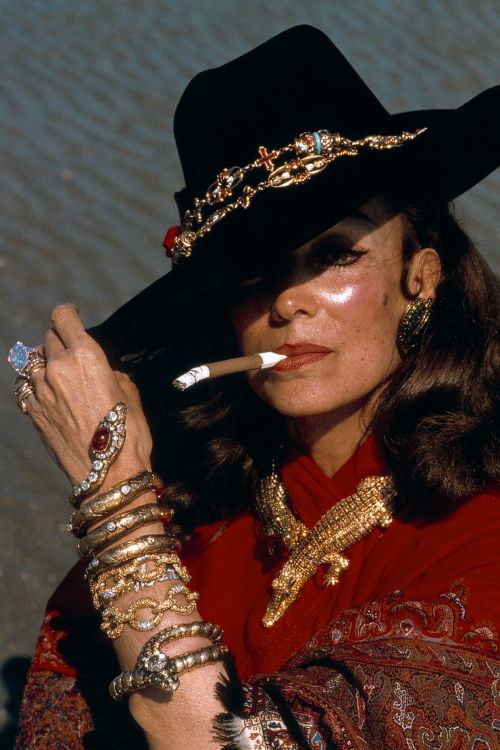
The other piece is a platinum, white gold and yellow gold snake necklace more than 22 inches long. It’s mounted with more than 2,400 brilliant- and baguette-cut diamonds and completed with green, red, and black enamel.
As impressive as these pieces are, the exhibition is also set up to engage viewers in the style of Cartier throughout its history. Details of each piece are intentionally few as the purpose is to focus on the design of the jewels and the evolution of the Cartier style. There are QR codes for several pieces that link to background information. The exhibition comprises five sections reflecting the history and style of Cartier: “The Early Days and the Birth of a Style,” “Universal Curiosity,” “Jeanne Toussaint’s Taste,” “Wearing Beauty and Measuring Time,” and “María Félix and Icons of Elegance.”
The space is designed as a darkened cave or temple where one is not only discovering the jewels but it feels as if one is learning about the raw materials as they are being unearthed.
Relating the collection to Mexico and Latin America was a challenge for Mallet. She discovered a Cartier diamond brooch with very little documentation that looked like an ancient Latin-American temple. The piece begins the exhibition and provides a tie-in with the Maria Félix jewels at the end.

The following are excerpts of interviews conducted with Pierre Rainero, Cartier image, style and heritage director, and curator Mallet, a Mexico City-based curator specializing in modern and contemporary design.
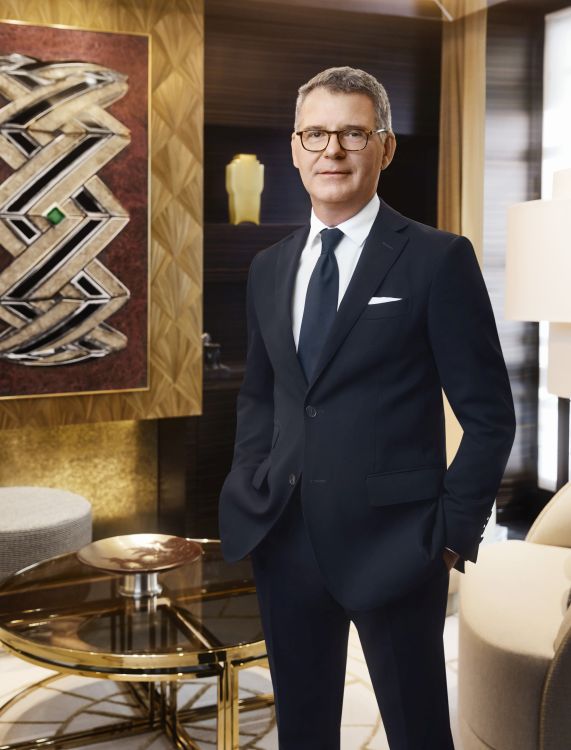
Conversation with Pierre Rainero
It’s been more than two decades since Cartier held an exhibition dedicated to Cartier creations in Mexico. What was that first exhibition about?
It was more of a historical approach. More chronological and also about the aesthetics. [The previous] exhibition also ended with Maria Félix items, because they were the most recent pieces within the collection. That was the logic. There was no specific focus on Maria Félix at the time. But her jewels were among the most recent pieces acquired by our collection. So that’s why they were at the end of the exhibition.
How is this exhibition different than the other ones Cartier hosts around the world?
Because every exhibition is different; there are countless creative paths even though the same pieces are often chosen by the different curators. And when there is a specific focus, other pieces are chosen. For instance, the last exhibition that took place in Paris was about the influence of Islamic art. It featured many pieces that are not in this exhibition. So, there’s a kind of central representation, which is like a common board for many country exhibitions. And then there is a specific focus. In fact, when we buy pieces for the collection, we always think in terms of how they represent a certain dimension of Cartier.
Did you know Maria Félix? Was she as cool as she appeared to be?
She was incredible. An incredible sense of humor; very witty and incredibly cultured. She could speak French fluently, almost without an accent. And she had a perfect knowledge of what society is. You could tell she was mastering codes. She arrived in Paris, I think, probably, [in the] last part in 1959, or the beginning of the 1960s, and she understood Parisian society perfectly. She knew how to act and behave. Her link with Cartier is from that period. And it’s very interesting how she started to buy pieces from stock, meaning already created by us, panthers by the way. Then she moved to special orders because she wanted panthers in her own way with different attitudes. Then she commissioned special orders representing different animals and things. You can see she understood that Cartier for her was a companion and how she can also have Cartier accompany her through her different expressions.
There was at least one piece that looked like it had Mexican origins: The first piece in the exhibition, a diamond brooch that looked like it could be a replica of a Mayan temple.
Yes, this is an interesting point, because the pyramid you’re referencing is obviously very similar to a Mayan pyramid. But our archives do not have the evidence that there was an image of a pyramid that led to this piece. In many other cases, we have the inspiration. This design is so obvious, it says a lot about the imagery of pre-Columbian architecture that was present in the minds of our people. Its position in the exhibition was not whimsical. It’s inscribed in a context where there’s an evolution to more volume for jewelry.
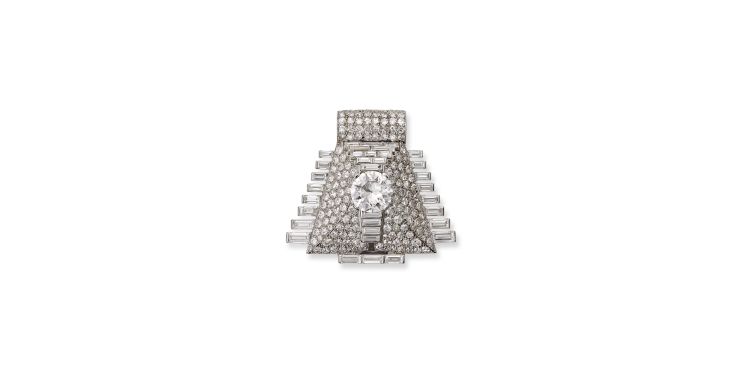
Did you provide any parameters or guidance for the curator?
Of course, yes. This project was born before Covid-19 was over so the books, images, Zoom meetings were strategic. Then they were able to come only a year ago to Paris and Geneva to discover the pieces. Ana was fascinated by the archives, and that’s where she found the explanations. When she chooses a piece, we are here also to provide her with more explanations but also to challenge her. We suggest other pieces that can answer her questions in the same way. Then the final choice is hers. Never ours. She really has the responsibility.
And she chose well?
Yes, I think there’s a consistency, a coherence in the exhibition, which is self-explanatory. And I think this exhibition is very interesting, because…in many museums, the curators want to give as much information about the artist or whatever. And sometimes it’s at the price of the appreciation of each of the works. This exhibition for me combines the two because the way the windows are separated one from the other, the number of pieces in a window, the type of lighting, it allows the visitor to appreciate the beauty of each of the pieces at the same time. You understand the message and the thinking of the curator. So, I think there’s a very good balance for the visitor when going through the exhibition.

Interview with Ana Elena Mallet
Why did you agree to curate the exhibition?
I had seen the 1999 exhibition when I started my professional career. For me it was really important to understand that this kind of material could also belong in a museum and multiple cultural lectures could be done with this amazing material that is jewelry. It was very exciting for me to have the opportunity to work with the Cartier collection.
They show something different everywhere they go.
That’s what I think is super interesting. They have the collection as a source, and they give it away to different curators and museums so they can have their own lecture.
You had to tie it into Mexico somehow.
That was my first take. Why have a Cartier exhibition in Mexico right now? There should be Mexican links. I found a couple. I know Louis Cartier was looking to the Orient and to China and India. But what about Mexico and South America? We didn’t find any proof in the archive, but the pyramid was there, the first piece [in the exhibition]. That was a South America or Latin America pyramid. This is proof they were looking here. And of course, the end of the show with Maria Félix there’s a connection. I thought we could tie the Mexican connection in the beginning and the end.
How much freedom did you have to choose the pieces?
A lot. In the beginningm the show was going to be very small. When I came in, I said we should push to make it bigger because there are two generations of Mexicans that hadn’t seen this material or will not have the opportunity to travel anywhere else to see this show. In the beginning I tried to create a timeline to show how their style has evolved.

You divided the exhibition into five subjects. Which subject is the most important to you?
Our third subject [“Jeanne Toussaint’s Taste”] for me was really important because I didn’t know anything about Jeanne Toussaint [or] Cartier having a creative director as early as 1933. And that she was a free woman, super independent with a mind of her own in the 1930s was fantastic. How Jeanne Toussaint started looking at the world and trying to bring Cartier into fashion and fashion into Cartier. She was very good friends with Coco Chanel and with fashion editors at the time.
Why did you decide to limit information about the pieces?
I remembered in the first Mexico City exhibition, they had a lot of photographs of celebrities and royalty wearing Cartier. I didn’t want to have that, because I wanted people to focus on the forms of pieces. What Frieda designed is a beautiful iconography and the lighting is special and dedicated for the viewer to see and enjoy each piece. We wanted very small labels so people wouldn’t get distracted. I really wanted people to approach it from a design point of view.
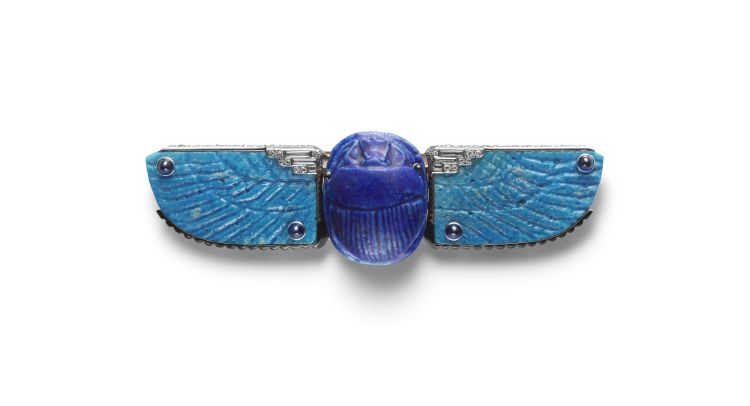
So, you chose the jewels based on design or forms?
Based on the style. I really wanted it to be a narrative that you could understand from the first styles — that garland style — and how it evolved into Art Deco and then the ’20s. Then looking at other cultures, and then to learn how it changes in the ’30s with more volumes and different stones when Jeanne Toussaint comes into the picture. It really helps to understand how this style developed. People at the end could understand why Maria Félix would choose Cartier as her house of preference — because they were daring, and they were innovating in with different materials, aesthetics and techniques. At that time going to Cartier was like going to the doctor. They will tell you what to wear and how to look. Maria understood that Cartier could do that. How Cartier can translate her style and her will.
What did you learn from the experience?
First is that companies, businesses, entities, NGOs, whatever, they all have to rely on history to understand who they are, and how to project themselves to the future. I think archives keep on being super important. Also, I think the professionalization of Cartier and how well they know their business. They’re in the culture business. They know how the pieces were created, where to find them, how to record them, register them, keep them and conserve them. That was amazing. To know and understand how culture and business could go together and create value and help people understand art as well.
Main image: Crocodile gold necklace set with 1,023 fancy-intense-yellow diamonds, 1,060 emeralds, and rubies, Cartier Paris, 1975. (Nils Herrmann/Cartier)

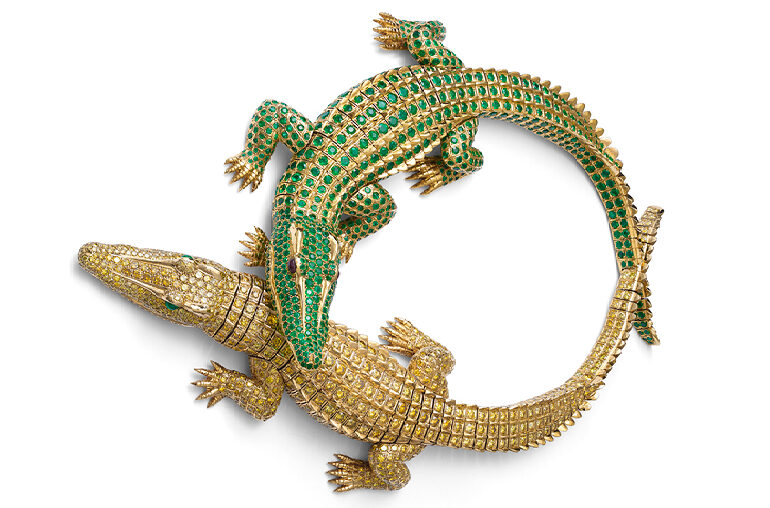
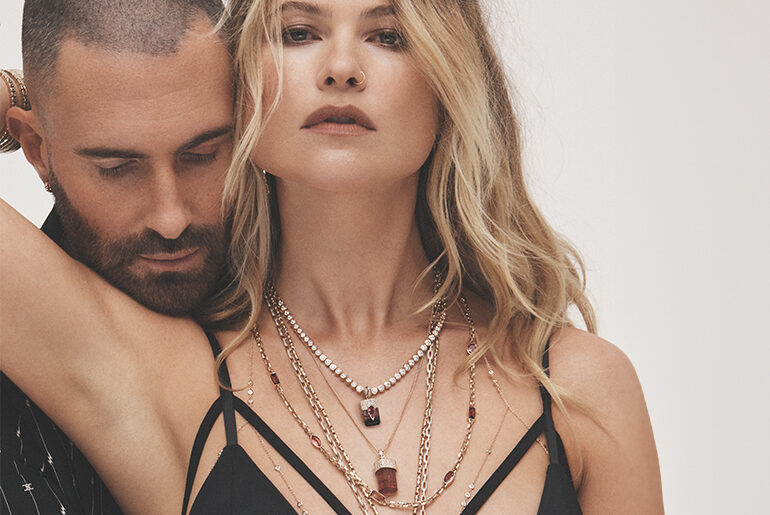
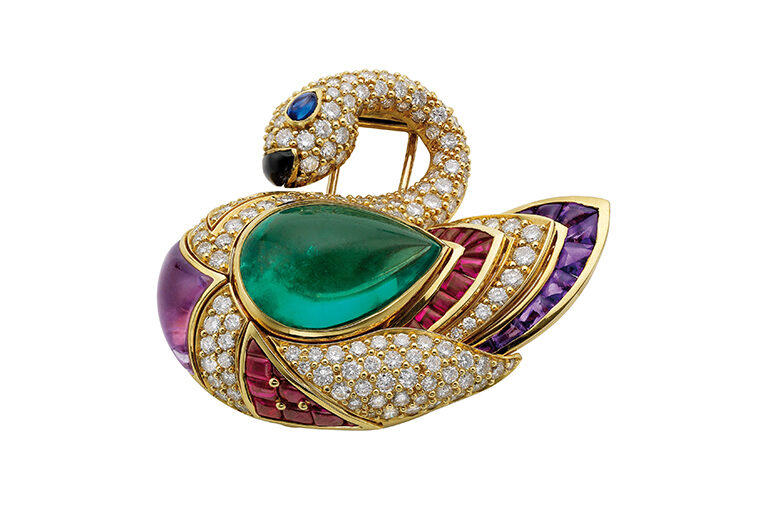
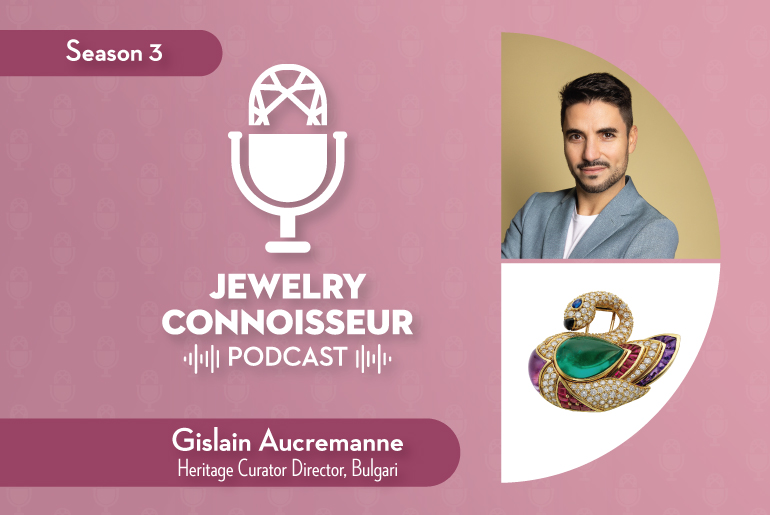
Comments are closed.